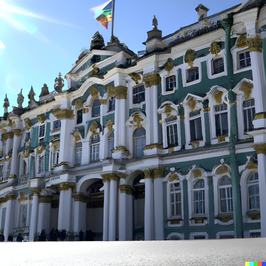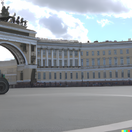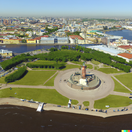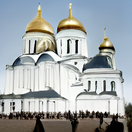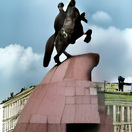Leningrad (TheodoresTomfooleries)
Leningrad
Ленингра́д | |
|---|---|
|
From top to bottom, left to right: the Winter Palace, the General Staff Building, Vasilyevsky Island, Trinity Cathedral, the Bronze Horseman, and Leningrad State University campus | |
| Etymology: Vladimir Lenin, "City of Lenin" | |
| Nickname(s): | |
| Motto(s): | |
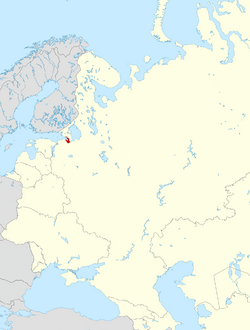 Leningrad in the Soviet Union | |
| Coordinates: Lua error in Module:Coordinates at line 492: attempt to index field 'wikibase' (a nil value). | |
| Country | Soviet Union |
| Union republic | Russian SFSR |
| Founded | 27 May, 1703 |
| Government | |
| • Body | Leningrad Soviet |
| Area | |
| • Total | 1,439 km2 (556 sq mi) |
| Population (2019) | |
| • Total | 6,646,131 |
| • Density | 4,600/km2 (12,000/sq mi) |
| Demonym | Leningrader |
| Time zone | UTC+3 |
| ISO 3166 code | SU-LGR |
| Website | leningradgov |
Leningrad (Russian: Ленинград), previously known as Saint Petersburg from 1703 to 1914 and Petrograd from 1914 to 1924, is the second largest city in the Soviet Union with a population of 6.646 million people as of the 2019 census. Formerly the capital of Russia and its predecessor, the Russian Empire from 1712 to 1918, Leningrad has long been described as the "northern capital of Russia", owing to its significance of being the center of Russian administration for over 2 centuries. Leningrad, founded by then-Tsar Peter the Great was located on the site of the former Swedish fort of Nyenschantz on the confluence of the Neva and Okhta river in 1703. It became the capital city of the Russian Tsardom in 1712 and after of the Russian Empire. The city is famous for its Baroque and Neoclassical-style buildings, particularly the famous Winter Palace which served as the residence of the Russian Emperor for 142 years. Other famous buildings include the Trinity Cathedral and the General Staff Building. Leningrad was and still is referred to as the capital of Russian culture; several notable artists hail from the northern metropolis, including Alexander Pushkin, Fyodor Dostoevsky and Nikolai Rimsky-Korsakov. It is one of the few Soviet cities to not serve as a capital whilst still maintaining the status of city of republican subordination.
